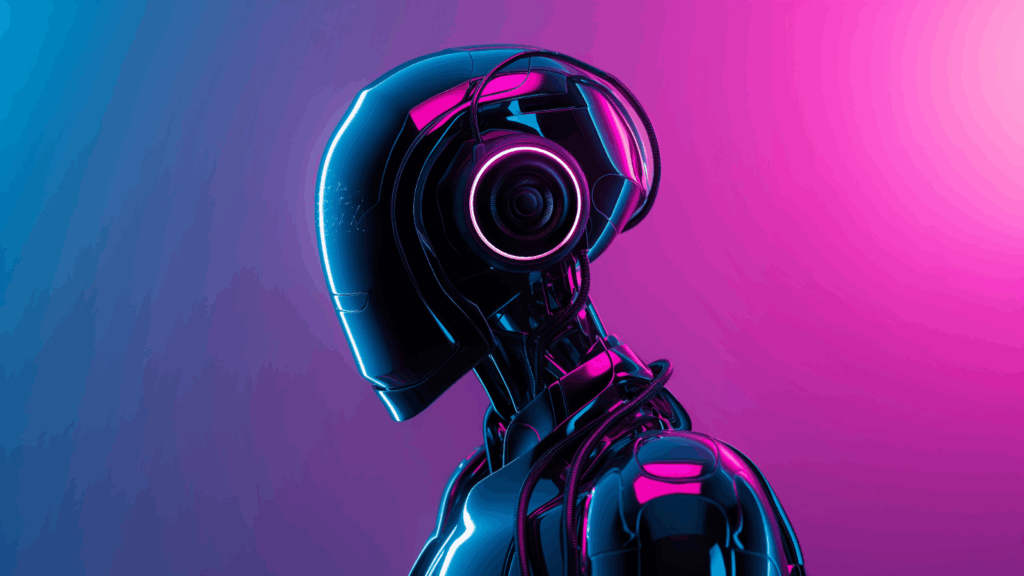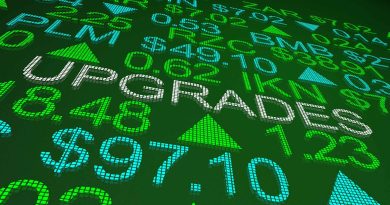Robotics: Physical AI Is Here, and It’s Coming for a $50 Trillion Market
Last week, at the Viva Tech conference in Paris on June 11, Nvidia (NVDA) CEO Jensen Huang made a bold proclamation:
“This is going to be the decade of AV (autonomous vehicles), robotics, autonomous machines.”
For many, that may sound like more hype out of the AI industry… more air for the ‘AI bubble’…
But based on the progress we’re seeing, Huang is dead-on.
As we noted in a previous issue:
- Amazon (AMZN) already employs over 750,000 robots in its warehouses, picking, sorting, lifting, and moving packages with precise coordination.
- Walmart (WMT) has partnered with Symbotic (SYM), automating 100% of its regional fulfillment centers using fleets of AI-powered arms and bots.
- Tesla (TSLA) uses industrial robots for assembly, painting, welding – and is now building and internally using Optimus, its humanoid factory worker.
- Deere & Co. (DE) is selling autonomous tractors that can plow fields without a human driver.
- Ocado (OCDDY) runs fully robotic grocery warehouses in the U.K.
- Starship Technologies has thousands of delivery bots roaming college campuses and suburban sidewalks.
We’ve seen the future – one that doesn’t just think or chat but moves, lifts, drives, delivers, and builds; not trapped behind a screen but embedded in the physical world around us.
Right now, we’re witnessing the rise of Physical AI.
And this revolution has only just begun…
Robotics Is Giving AI a Body – and a New Purpose
AI may have started as software – ChatGPT, Midjourney, Copilot; useful, disruptive, though limited to the screen.
But what comes next is embodied AI: robots that pick packages, drive trucks, deliver groceries, pour coffee, maybe even fold your laundry.
What was once science fiction is quickly becoming reality.
- Waymo is already delivering 250,000 rides a week across four U.S. cities, with plans to expand to Miami, Atlanta, and D.C.
- Aurora (AUR) has launched commercial self-driving trucks in Texas.
- Tesla’s Robotaxi program begins piloting in Austin this month, and the company is ramping production of its humanoid robot, Optimus.
- Figure AI has humanoids working in sorting centers.
- UBTech is preparing to sell consumer humanoid robots for just $20,000 in China.
- This August 2025, Beijing is opening the world’s first humanoid robot dealership.
The robots have arrived – perhaps much sooner than anyone anticipated.
And a technological breakthrough of this caliber has huge economic implications…
Inside the Emerging Robotics Economy: Who Wins, Who Loses
Currently, over 2.5 billion people around the world do some form of physical labor, whether driving, lifting, stocking, cooking, cleaning, or assembling.
For the companies hard at work creating precision robotics, that’s $50-plus trillion in annual labor output waiting to be automated.
Just as ChatGPT disrupted white-collar work, physical AI is now coming for everything else.
We seem to be staring down the barrel of the next industrial revolution… one that could upend the global labor market while unlocking a self-reinforcing economic flywheel.
Just consider: Most AI software still needs a human in the loop to click, prompt, or implement. But physical AI doesn’t.
Once deployed, robots can essentially work around the clock, continuously improving via data and model updates – a 24/7 productivity engine.
That kind of exponential efficiency has been limited to software… until now.
What changed? Why is the rise of physical AI accelerating so swiftly at the moment?
One major reason is cost. The sensors powering these systems – cameras, LiDAR, depth sensors – were once prohibitively expensive. But economies of scale have brought prices down.
Chipmakers have also pivoted, designing processors specifically for robotics. Think Nvidia Orin, Xpeng Turing, Tesla Dojo.
And AI model makers have turned their focus to the physical world, like Meta’s new AI “world model” that helps robots learn by simulating interactions with real environments.
All the missing pieces are coming together quickly.
That’s why, over the months ahead, we think this convergence could spark entirely new tech ecosystems. Physical AI will drive:
- Robotic dealerships (like the one opening in Beijing)
- Maintenance-as-a-Service businesses
- Robot Operating Systems
- Fleet management platforms
- AI-powered construction and farming vehicles
- Hardware supply chains for sensors, motors, joints, and chips
It’s a full-stack transformation of work, transportation, and infrastructure.
How to Invest in the Rise of Robotics and Physical AI
For those looking to get in on this lucrative action, we see a few solid options.
At the top of the ecosystem are the ‘core’ builders – the companies making and delivering next-gen solutions.
There’s Tesla with its Robotaxi business and Optimus project; Alphabet (GOOGL) with Waymo. You have Aurora and its self-driving trucks. Symbotic is a well-known warehouse robotics operator, and Serve Robotics (SERV) has sidewalk delivery robots.
Beneath these top-layer firms are the hardware enablers supplying the brains and the bones for embodied AI.
Think Nvidia: its ‘Orin’ powers most robotics platforms and dominates physical AI compute. There’s also Taiwan Semiconductor (TSM), which builds all the foundational chips that drive current AI systems. And the same will likely be true for Physical AI.
Ambarella (AMBA) is a sneakier play here. The firm makes computer vision chips that could prove critical for edge robotics. Mobileye (MBLY) is also interesting. It creates autonomy software and vision stacks. And Rockwell Automation (ROK) – maker of advanced motors, sensors and industrial automation components – is another name worth looking at here.
Then there’s Physical AI’s development and OS layer. Think Palantir (PLTR), UiPath (PATH), or Meta (META), which are all developing the software to power these robotic systems.
In other words, the stack is already being built. And the investment roadmap is rapidly taking shape.
Why Physical AI Could Be the Next iPhone Moment
Much of the world still thinks the robotic era is years away. But they thought the same thing when ChatGPT debuted in 2022…
And yet in just over two years, AI chatbots have gone from novelty to necessity, writing code, answering customer service queries, generating legal summaries, tutoring students, even passing medical exams.
They’re embedded into Google Search, Microsoft Office, and Salesforce (CRM), reshaping workflows across marketing, software, education, finance, and healthcare.
That’s the speed of adoption we’re dealing with.
Tech revolutions have a funny way of sneaking up and catching us all by surprise.
We think we’re approaching the iPhone moment for Physical AI. Just as the iPhone combined multiple technologies (touchscreens, mobile data, apps) into a singular breakout product, Physical AI fuses sensors, robotics, and generative models into autonomous, scalable labor platforms.
And as in 2007, when the first iPhone was unveiled, the winners will be those who bet on tomorrow’s leaders before the crowd catches on.
For those looking to get ahead of embodied AI’s meteoric rise, we have our eye on one particular supplier stock that seems to have outsized potential.
The post Robotics: Physical AI Is Here, and It’s Coming for a $50 Trillion Market appeared first on InvestorPlace.






